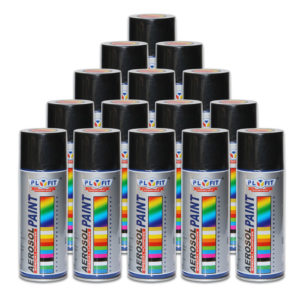The Ultimate Guide To Diatomaceous Earth
Contents
The Dilemma
They’ve been invading us since we stood up on two feet and walked out of the primordial muck. Insect pests love the cozy habitats and food supplies that we humans provide. Some even consider us their food.
Since the invasion began, we have been trying to eliminate bugs from the places where we live, sleep, and eat for good reason. Nestled with us, insects can spread disease, parasites, and general discomfort to their human hosts.
Over the millennia, we have tried everything from mud baths to herbal repellants. In recent centuries, we developed chemicals to kill the invaders. Unfortunately, what kills the bugs can also kill us, or cause serious health problems.
It is a dilemma. How do we win the battle and eliminate insect pests from our personal space without damaging the environment or ourselves? The answer has been around for millions of years…Diatomaceous Earth.
What is Diatomaceous Earth?
Diatomaceous Earth, generally known by the simpler designation of DE, is a powdery substance with the consistency of talc. Whitish in color, the powder comes from the fossilized remains of phytoplankton, tiny crustaceans known as diatoms.
Under a microscope, the single-celled organisms exhibit stunning geometric shells. A University of Arizona Cooperative Extension report explains that as the prehistoric diatoms died, their remains settled to the bottom of oceans, lakes and rivers.
Eventually, the ancient seas and lakes disappeared, and the diatom sediment dried, becoming the white dust we know as diatomaceous earth. Today, DE is mined from the dry lake and sea beds of Nevada, California, Oregon, and Washington.
Non-Toxic and Highly Effective
Scoop up a handful. It’s safe, non-toxic, and feels smooth and powdery on your skin, but those microscopic geometric shapes have tiny sharp edges. Those little sharp edges are the secret to DE’s effectiveness as a pest control agent.
Insects have exoskeletons, the hard shell that surrounds their soft, wet insides. When the DE contacts an insect’s hard exterior, it clings. The powder’s tiny sharp edges act as an abrasive, cutting away at the exoskeleton, getting into cracks and crevices in the insect’s body. Because it is absorbent, the DE sucks away the protective oils and fats in the outer shell. As the insect’s protective cover loses the ability to hold moisture inside, the insect dries out.
DE acts as a physical agent, not a poison. Like other animals, insects require water. When it evaporates away, the insect dehydrates and dies. No poisons are involved, which means DE is non-toxic, yet highly effective.
Is DE Really Safe?
Because DE is inert and contains no toxins in its pure food-grade form, it is completely safe to handle. Unlike pesticides, exposure to DE will not harm family members or pets. Following are a few facts about DE’s safety as a pest control agent. The source is the Oregon Department of Environmental Quality.
- Is DE a health hazard? – No. Natural DE contains amorphous silica. This form of silica is non-toxic to humans, and there is no evidence connecting DE with cancers in animals or humans. The minute amount of crystalline silica (the harmful type of silica) in DE is much too small to pose any hazard to humans.
- Can inhaling DE dust be harmful? – Breathing large quantities of any dust is not good for you so, in general, don’t breath dust. People with asthma, allergies, etc. would be no more susceptible to reactions from inhaling DE dust than they would from any other dust. DE dust is not poisonous.
- Is DE safe to use around animals? – Yes. It is non-toxic to animals as well as humans.
- Does DE harm rivers, lakes and wildlife? – No…except insects with exoskeletons, of course. In rivers and lakes, DE is basically the same as natural sand and sediment on the bottom and poses no threat to fish or other water dwelling animals.
- Does DE harm plants? – No. Of course, it is not good to put a heavy coating of any dust on plants, but a normal dusting to control insects is not at all harmful.
- Is it safe to live near a source of DE? – Yes. If you happen to live near one of the dry lake beds or ancient seas where DE is found, you are completely safe.
The bottom line, DE is environmentally friendly and non-hazardous.
How Do You Use DE?
How do you apply this natural wonder of insect pest control? The first thing to remember is that DE is a dry powder. It works best when it is dry.
Moisture tends to soften the diatoms’ tiny sharp edges that do the work of cutting into the insect exoskeleton. This reduces the effectiveness of the application. Remember, the whole purpose is to deprive the insect of moisture.
Household Use
For general application to kill or control insects with DE, lightly dust surfaces where they crawl. For example, if ants make trails along your baseboards looking for fallen crumbs, a dusting of DE will bring them under control.
For bugs that like to hide in cracks and crevices, use a bulb duster. Puff the DE dust into crevices, behind drawers, under sinks and into any other crack that may harbor the little pests. The DE will do its work and in a short time, the area will be insect free.
Apply a dusting of DE around the exterior foundation of your home. It will act as a barrier to invading pests.
Another good use is to add DE (Food Grade Only) to stored grains, flour, rice, etc. The DE will control pests that are hungry for your food stores.
In the Garden
DE is also highly useful in gardens for control of insects that love your potatoes, beans, or squash. Using the bulb duster again, coat leaves and affected parts of plants. If you see any larvae or individual insects on your plants, give them a good dusting. The DE will go to work without harming the plant or any produce you may be ready to pick.
In fact, unlike other toxic bug killers, DE can be used at any time during the growing season. Vegetables can be picked without the usual waiting period of days or weeks that is required when using pesticides. Just wash off the DE and eat. If you happen not to get it all off, no problem., as DE is completely non-toxic.
An important note here about using DE in the garden. Remember that DE will cause the dehydration effect on virtually all insects, including beneficial ones, like honeybees and butterflies. Protect the beneficial insects, by covering dusted plants with burlap or plastic while the DE works on the bugs. Afterward, uncover them and rinse the plants off with a garden hose. The DE washed into the earth is… you guessed it… non-toxic.
Finally, a significant benefit to using DE in the garden is that it will not harm the birds and other animals that may frequent your yard. Traditional pesticides cannot make the same claim.
On Your Pets
To control fleas, ticks, and lice, dust your pets with DE. Work it into their coats and then brush away excess. DE has been shown to be particularly effective in controlling the pests that are attracted to our furry companions.
Don’t forget to sprinkle some DE onto pet beds, carpets and drapes. Any material that harbors, insects can be treated. Afterward, brush them off, or wash if necessary, and continue to use. There is no toxic residue.
Other Uses
Pure DE is also contained in products that we use every day. Because of its mildly abrasive properties, it can be found in toothpastes, metal polishes, and facial scrubs.
Composed of porous, microscopic diatoms DE is frequently used for filtration. Typical applications are in swimming pool filters and chemistry labs where it is necessary to filter out microscopic particles from solutions.
DE is also used in raising livestock and is often given to animals in their feed. Farmers claim that it works inside to eliminate worms and other parasites in the same way that it kills insects. One study published by the National Center for Biotechnology showed that chickens fed DE had fewer parasites. Some even grew larger and laid more eggs.
There are also people who claim there are similar beneficial effects for humans taking DE internally on a regular basis. To this date, no studies have been conducted on human consumption of DE, but the theory is the same as in feeding it to livestock.
What to Buy
Beware when purchasing DE. There are products on the market that are labeled “DE”, or “contains DE” that incorporate pesticides into their formulas. Of course, when they do this, they have negated its non-toxicity by adding poison.
When purchasing DE for use in household pest control, it is important to buy only the Food Grade type. Never buy pool filtration DE for use other than in pools. Some Food Grade DE products will say 97% DE, 3% other added products on the label. Since you have a choice, avoid the “other added products” and purchase only pure Food Grade DE.
Finally, look for food grade DE that contains less than .5% crystalline silica. Remember, that’s the bad silica. Most Food Grade DE claims less than .5% crystalline silica and actually contain much less, .1% or .2%.
A Natural Solution
Want to get the bugs out? (pun intended) Diatomaceous Earth is your natural solution to pest control. It is safe to use, easy to apply, non-toxic and effective…a win-win all around.
Non Toxic Spray

This non-toxic spray kills larvae, eggs, and adult insects by breaking down their exoskeleton. It is safe to spray around the home and works only on the insects. Feel good about spraying indoors around pets, plants and children.
All Natural Non Toxic Insect Killer Spray by Killer Green

